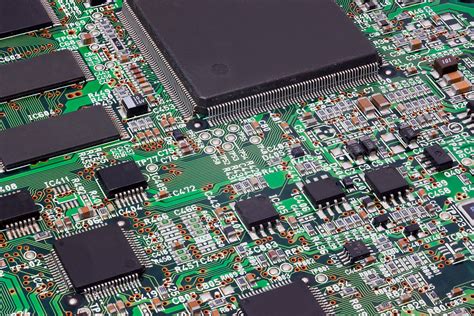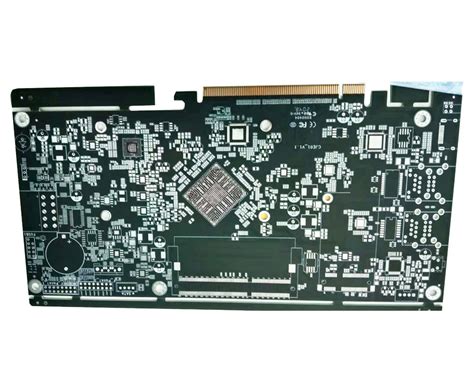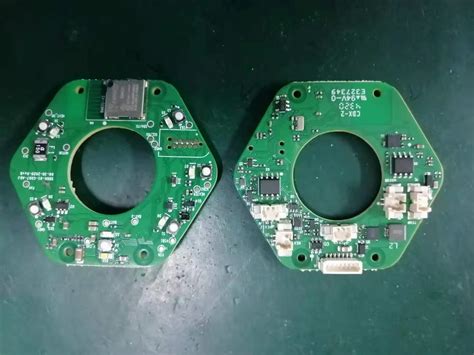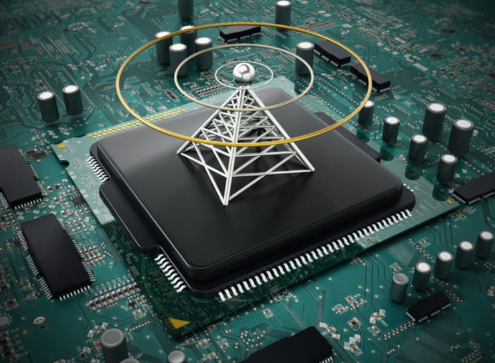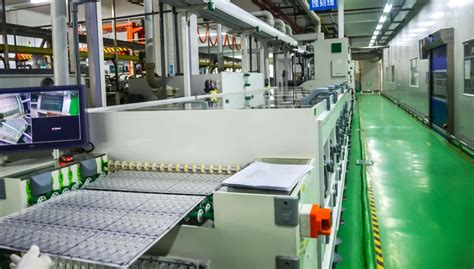Mastering Board PCB Assembly: Tips for Perfecting Your Projects
Key Takeaways
Mastering pcb assembly, often referred to as PCBA, requires a blend of fundamental knowledge and practical experience. Understanding the intricacies of each phase in the pcb assembly process is crucial for achieving outstanding results. One of the key aspects is selecting the right materials and tools, which lays the foundation for quality and efficiency. When working on PCBA, attention to detail can prevent common pitfalls, such as misalignment and soldering issues. Therefore, familiarizing yourself with best practices for soldering techniques is essential. Implementing rigorous quality control measures will further enhance your work by ensuring precision at every stage. As technology evolves, keeping an eye on advanced techniques can offer new opportunities to increase productivity in your projects. By integrating these elements into your practice, you’ll not only enhance your skills but also set the stage for a successful outcome in every assembly endeavor.
Introduction to Board PCB Assembly: Understanding the Basics
In the world of electronics, pcb assembly is a fundamental process that transforms designs into functional devices. Understanding the basics of pcba (Printed Circuit Board Assembly) is crucial for both hobbyists and professionals aiming to produce high-quality, reliable products. At its core, pcb assembly involves several key components and processes, including the placement of electronic components on a PCB, followed by soldering them into place. This intricate procedure requires a solid grasp of factors such as component orientation, soldering techniques, and the significance of suitable materials.
Familiarity with the anatomy of a PCB is essential; knowing what each part does can significantly affect assembly outcomes. For instance, understanding how vias (the holes that allow electrical connections between layers) function can aid in designing more efficient boards. Additionally, recognizing the importance of thermal management—keeping components cool to prevent overheating—is pivotal for enhancing device longevity and performance.
The initial setup will typically require basic tools such as soldering irons, tweezers, and magnifying glasses. Investing in quality tools can make a noticeable difference in outcomes. Moreover, it’s crucial to maintain a clean workspace to avoid contamination that could lead to faulty connections.
The efficiency of your pcba process hinges on these foundational principles; mastering them lays the groundwork for tackling more complex assemblies and mitigating common challenges. As you delve deeper into this realm, you’ll discover how innovation shapes future trends in this dynamic field.
Essential Tools and Materials Needed for PCB Assembly
When embarking on your PCB assembly journey, having the right tools and materials is crucial for achieving a successful outcome. Key items that you’ll need include a soldering iron, which is essential for joining components to the board, along with quality solder that provides a strong and reliable connection. Additionally, a good pair of tweezers will aid in placing tiny components accurately on the PCB.
You should also invest in a proper PCB holder or fixture. This tool keeps your board secure while you work, allowing you to focus solely on assembly without worrying about holding the board in place. A multimeter is another vital tool; it allows you to measure voltage, resistance, and continuity to ensure that your connections are accurate.
Once you’ve gathered your tools, don’t overlook the importance of high-quality materials. Start with a well-manufactured PCB, as the quality of your base affects every aspect of your project. It’s beneficial to select components that are compatible with the design and requirements of your specific project.
“Always double-check the specifications of each component; it saves time and resources in the long run.”
Lastly, ensure that you have cleaning materials on hand. Isopropyl alcohol and lint-free cloths can help maintain cleanliness throughout the assembly process, which is important for preventing unwanted residues that can impair functionality.
Equipping yourself with these essential tools and materials will lay a solid foundation for mastering pcba, leading to more efficient and precise results in all your projects.
Step-by-Step Guide to Assembling Your PCB Boards
Assembling PCB boards can seem daunting, but breaking the process down into manageable steps can significantly enhance your efficiency and accuracy. Start by gathering all necessary materials for PCB assembly, including the PCB board, components, solder, and tools like a soldering iron and multimeter. Before you begin, it’s essential to familiarize yourself with the schematics of your design to understand where each component fits.
Next, carefully position the components on the board according to the layout, ensuring that you take note of polarity for electronic components such as diodes and capacitors. Once everything is in place, use a soldering iron to connect each component securely; this is where mastering your soldering technique will pay off. For beginners, practicing on scrap boards can be beneficial before tackling your main project.
After completing your connections, perform a thorough inspection of the board. Check for any solder bridges or misaligned components that could lead to future functionality issues. Utilizing a multimeter at this stage will help you confirm connections and troubleshoot any potential problems before powering on your project. Following these steps will guide you through successful PCBA, ultimately leading to more reliable and efficient electronic projects.
Common Challenges in PCB Assembly and How to Overcome Them
When delving into pcb assembly, various challenges may arise that can hinder the efficiency and quality of your projects. One frequent issue is the misalignment of components on the board, often resulting from inadequate pcb assembly techniques or insufficient tooling. To tackle this, investing in precision alignment tools can significantly enhance placement accuracy. Another common hurdle is dealing with soldering defects like cold joints or bridging, which can impact the functionality of the assembled board. Ensuring that your soldering techniques adhere to best practices and using high-quality solder can mitigate these issues effectively. Additionally, managing thermal stresses during the process is crucial; using thermal relief pads can help distribute heat more evenly across components, reducing the risk of damage. By proactively identifying these challenges in pcba and applying strategic solutions, you can significantly enhance both efficiency and reliability in your assembly process.
Best Practices for Soldering Techniques in PCB Assembly
Soldering is a fundamental skill in pcb assembly that greatly influences the reliability and functionality of your electronic projects. To achieve successful pcba, it is essential to adhere to best practices in soldering techniques. Begin by ensuring that all components and the PCB surface are clean. Any dirt, grease, or oxidation can prevent proper adhesion of the solder. When selecting solder, opt for high-quality materials tailored for electronic applications—typically a rosin-core solder works best for achieving excellent electrical connections.
Heat management is also crucial; using the correct temperature helps ensure that you don’t overheat sensitive components. Utilizing a soldering iron with adjustable temperature settings can significantly enhance your control over the process. As for technique, apply heat to both the PCB pad and the component lead simultaneously to create a good joint. After introducing the solder, remove it and then take away the heat; a properly formed joint will appear shiny and smooth.
Another significant aspect is utilizing appropriate tools, such as fine-tip soldering iron tips for precision work on smaller components. Employing flux can also improve your results as it assists in fusing the solder to both metal surfaces effectively while preventing oxidation during heating.
In conclusion, adopting these best practices will not only enhance your skill set but also lead to higher quality and more reliable pcb assembly outcomes. Every carefully crafted joint contributes towards building efficient electronics that perform as intended, highlighting the importance of proficient soldering techniques in achieving success in pcba.
Quality Control: Ensuring Precision in Your PCB Projects
Quality control is a critical phase in pcb assembly that cannot be overlooked if you want to guarantee the success of your projects. The precision of your assembled boards directly impacts their performance and reliability. Implementing a robust quality control checklist prior to, during, and after the pcba process is essential. Begin by validating the integrity of your components—checking for any signs of damage or defects prior to assembly can save you time and resources later. During the pcb assembly process, regular visual inspections should be conducted to catch any potential errors early on, such as misplaced components or poor solder joints. After the assembly is complete, performing functional tests on your boards will further ensure that everything is working as intended before deployment. Utilizing both human oversight and automated testing solutions can lead to higher accuracy, ultimately enhancing the overall quality of your projects. By focusing on quality control at every stage, you can foster greater confidence in the reliability of your final products, ensuring that they meet both industry standards and customer expectations.
Advanced Techniques for Enhancing PCB Assembly Efficiency
To achieve optimal pcb assembly results, integrating advanced techniques can significantly improve efficiency and precision throughout the process. One vital approach is to utilize automated assembly equipment, which not only reduces the time spent on repetitive tasks but also enhances overall consistency in placements and soldering. Additionally, adopting surface mount technology (SMT) allows for smaller components to be placed on the circuit board, thus maximizing space and reducing the likelihood of soldering errors. Implementing multi-layered boards can also streamline complex circuits, as they require fewer physical connections and promote better electrical performance.
Moreover, investing in high-quality solder paste and employing techniques such as proper stencil alignment can ensure that solder is applied evenly, reducing rework and waste. Regular training sessions on best practices for technicians can elevate their skills, ensuring they are well-versed in the latest methods in pcba techniques. By integrating real-time tracking systems within the assembly line, manufacturers can monitor performance metrics closely—this insight allows for immediate adjustments that enhance the overall workflow and product quality. Ultimately, leveraging these advanced methods not only ensures superior results but also cultivates a more efficient PCB assembly environment that benefits all stakeholders involved.
Future Trends in PCB Assembly: Innovations to Watch Out For
As technology continues to evolve, the world of PCB assembly is seeing a remarkable transformation driven by innovations that enhance efficiency and precision. One emerging trend is the advent of automated assembly processes, which leverage robotics and artificial intelligence to streamline production and reduce human error in PCBA. These advanced systems not only increase production speed but also improve the quality of the final product by ensuring consistent soldering and placement accuracy.
Another significant trend is the integration of flexible PCBs, which offer enhanced versatility for various applications—including wearables and flexible devices. This adaptability allows designers to develop innovative solutions that were previously considered challenging or impractical. Furthermore, advancements in materials science have led to the creation of high-frequency PCBs, essential for supporting complex, high-speed circuits found in modern electronics.
In addition, there is a growing focus on sustainability within the pcb assembly sector. Companies are increasingly seeking eco-friendly materials and processes that minimize waste and energy consumption. This commitment not only benefits the environment but also appeals to consumers who are conscientious about their ecological footprint.
Overall, these innovations represent just a fraction of what lies ahead in PCB assembly. As manufacturers adopt these cutting-edge technologies and practices, we can expect even greater advancements on the horizon that will redefine industry standards and expectations.
Conclusion
In the realm of pcb assembly, mastering the art of assembling printed circuit boards is crucial for the success of any electronics project. Understanding the nuances of pcba allows enthusiasts and professionals alike to enhance their skills, ensuring that each stage of the assembly process leads to optimal results. By implementing techniques such as proper soldering practices and thorough quality control measures, you can significantly reduce the likelihood of errors and improve efficiency. Additionally, staying informed about emerging technologies in pcb assembly can give you a competitive edge, allowing for innovation in your projects. As you continue to refine your skills and embrace best practices in pcba, remember that consistency and attention to detail are key drivers of success. As you conclude your journey in honing these skills, keep pushing boundaries and exploring new methods to elevate your pcb assembly capabilities.
FAQs
What is PCB assembly, and why is it important?
PCB assembly refers to the process of connecting electronic components to a printed circuit board (PCB). It is crucial because effective pcba ensures that electronic devices function correctly, improving performance and reliability.
What tools are necessary for DIY PCB assembly?
To successfully conduct pcb assembly, you’ll need several essential tools, including a soldering iron, solder wire, tweezers, and a multimeter for testing connections. Additionally, consider using flux for better soldering results.
What are the common challenges faced during PCB assembly?
Some typical challenges include misalignment of components, poor soldering techniques leading to cold joints, and inadequate testing processes. Overcoming these challenges requires careful planning and adherence to best practices.
How can I improve my soldering technique in PCB assembly?
Improving your soldering technique involves ensuring that your soldering iron is properly heated and clean. Practice makes perfect—consider doing test runs or joining workshops designed to enhance soldering skills.
What role does quality control play in PCB assembly?
Quality control ensures that every aspect of the pcba is checked for defects or errors. This step is vital to prevent costly mistakes and guarantee a reliable final product meets specifications.

